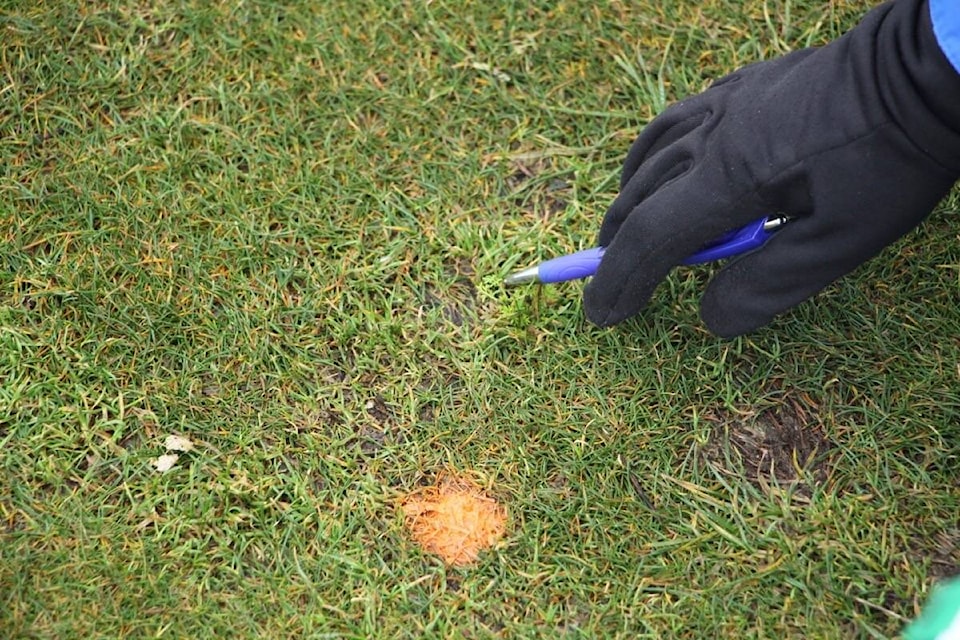Each year Oak Bay wages war against an invasive plant that sends out stickers in its bid to spread.
Carpet burweed (Soliva sessilis) threatens to suffocate the already at-risk species endemic to the rare maritime ecosystem of Cattle Point at Uplands Park.
The plant suppresses native species such as meadow foam and camas. Burweed originates from South America and was first spotted in Canada in 1996 on Salt Spring Island. By 2005, it had spread to parks in Greater Victoria including Cattle Point, Beacon Hill Park and Jordan River Regional Park. Oak Bay fenced off an area and let the grasses grow up to drown it out, but the burweed hopped the fence and by 2012 it was abundant.
RELATED: Plant burning in Oak Bay park a shared experience
There are two concerns for Oak Bay, said conservation biologist Wylie Thomas, a longtime Oak Bay consultant. First is the potential spread – the plant’s prickly seeds arrive in May and June, latching themselves to shoes, clothes and pets then spread through other parks and yards. More importantly, the burweed has a negative impact on the seaside portion of Uplands Park, as it prefers the same habitat as many of Cattle Point’s rare species.
Earlier this year, crews took flames to some burweed outbreaks, but torching is limited to areas away from the maritime meadows of Cattle Point, which are home to rare plants. There, plants are pulled by hand.
The No Ivy League hosts Sunday sprees, where volunteers remove carpet burweed, Daphne and English ivy weekly between 1 and 3 p.m. now through May. Those looking to help the Friends of Uplands Park can meet at the marine kiosk at Cattle Point.
RELATED: Oak Bay torching invasive burweed at Cattle Point
Do you have a story tip? Email: c.vanreeuwyk@blackpress.ca.
Follow us on Twitter and Instagram, and like us on Facebook.
